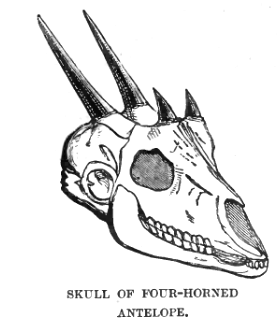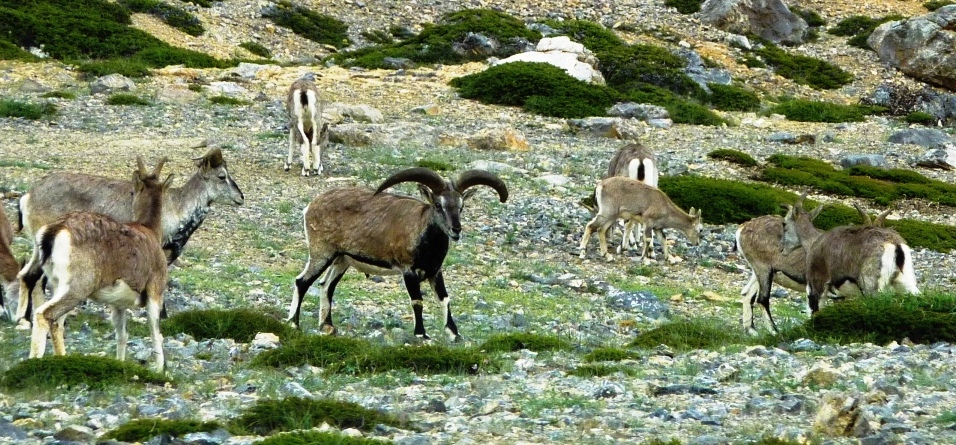|
List Of Mammals Of Nepal
This list of mammals of Nepal presents mammal species recorded in Nepal, of which one is critically endangered, eleven are endangered, twenty are vulnerable, and four are near threatened. The following tags are used to highlight each species' conservation status as assessed on the IUCN Red List: Order: Artiodactyla (even-toed ungulates) ---- The even-toed ungulates are ungulates whose weight is borne about equally by the third and fourth toes, rather than mostly or entirely by the third as in perissodactyls. There are about 220 artiodactyl species, including many that are of great economic importance to humans. *Family: Bovidae (cattle, antelope, sheep, goats) **Genus: ''Antilope'' ***Blackbuck, ''A. cervicapra'' **Genus: ''Bos'' ***Gaur, ''B. gaurus'' ***Wild yak, ''B. mutus'' **Genus ''Boselaphus'' ***Nilgai, ''B. tragocamelus'' **Genus: ''Bubalus'' ***Wild water buffalo, ''B. arnee'' **Genus: '' Capricornis'' ***Mainland serow, ''C. sumatraensis'' **** Himalayan ser ... [...More Info...] [...Related Items...] OR: [Wikipedia] [Google] [Baidu] |
Nepal
Nepal (; ne, नेपाल ), formerly the Federal Democratic Republic of Nepal ( ne, सङ्घीय लोकतान्त्रिक गणतन्त्र नेपाल ), is a landlocked country in South Asia. It is mainly situated in the Himalayas, but also includes parts of the Indo-Gangetic Plain, bordering the Tibet Autonomous Region of China to the north, and India in the south, east, and west, while it is narrowly separated from Bangladesh by the Siliguri Corridor, and from Bhutan by the Indian state of Sikkim. Nepal has a diverse geography, including fertile plains, subalpine forested hills, and eight of the world's ten tallest mountains, including Mount Everest, the highest point on Earth. Nepal is a multi-ethnic, multi-lingual, multi-religious and multi-cultural state, with Nepali as the official language. Kathmandu is the nation's capital and the largest city. The name "Nepal" is first recorded in texts from the Vedic period of the India ... [...More Info...] [...Related Items...] OR: [Wikipedia] [Google] [Baidu] |
Cervidae
Deer or true deer are hoofed ruminant mammals forming the family Cervidae. The two main groups of deer are the Cervinae, including the muntjac, the elk (wapiti), the red deer, and the fallow deer; and the Capreolinae, including the reindeer (caribou), white-tailed deer, the roe deer, and the moose. Male deer of all species (except the water deer), as well as female reindeer, grow and shed new antlers each year. In this they differ from permanently horned antelope, which are part of a different family (Bovidae) within the same order of even-toed ungulates (Artiodactyla). The musk deer (Moschidae) of Asia and chevrotains (Tragulidae) of tropical African and Asian forests are separate families that are also in the ruminant clade Ruminantia; they are not especially closely related to Cervidae. Deer appear in art from Paleolithic cave paintings onwards, and they have played a role in mythology, religion, and literature throughout history, as well as in heraldry, such as red dee ... [...More Info...] [...Related Items...] OR: [Wikipedia] [Google] [Baidu] |
Four-horned Antelope
The four-horned antelope (''Tetracerus quadricornis''), or ''chousingha'', is a small antelope found in India and Nepal. Its four horns distinguish it from most other bovids, which have two horns (with a few exceptions, such as the Jacob sheep). The sole member of the genus ''Tetracerus'', the species was first described by French zoologist Henri Marie Ducrotay de Blainville in 1816. Three subspecies are recognised. The four-horned antelope stands nearly at the shoulder and weighs nearly . Slender with thin legs and a short tail, the four-horned antelope has a yellowish brown to reddish coat. One pair of horns is located between the ears, and the other on the forehead. The posterior horns are always longer than the anterior horns, which might be mere fur-covered studs. While the posterior horns measure , the anterior ones are long. The four-horned antelope is diurnal (active mainly during the day). Though solitary by nature, four-horned antelopes may form loose groups of th ... [...More Info...] [...Related Items...] OR: [Wikipedia] [Google] [Baidu] |
Tetracerus
The four-horned antelope (''Tetracerus quadricornis''), or ''chousingha'', is a small antelope found in India and Nepal. Its four horns distinguish it from most other bovids, which have two horns (with a few exceptions, such as the Jacob sheep). The sole member of the genus ''Tetracerus'', the species was first described by French zoologist Henri Marie Ducrotay de Blainville in 1816. Three subspecies are recognised. The four-horned antelope stands nearly at the shoulder and weighs nearly . Slender with thin legs and a short tail, the four-horned antelope has a yellowish brown to reddish coat. One pair of horns is located between the ears, and the other on the forehead. The posterior horns are always longer than the anterior horns, which might be mere fur-covered studs. While the posterior horns measure , the anterior ones are long. The four-horned antelope is diurnal (active mainly during the day). Though solitary by nature, four-horned antelopes may form loose groups of th ... [...More Info...] [...Related Items...] OR: [Wikipedia] [Google] [Baidu] |
Bharal
The bharal (''Pseudois nayaur''), also called the blue sheep, is a caprine native to the high Himalayas. It is the only member of the genus ''Pseudois.'' It occurs in India, Bhutan, China (in Gansu, Ningxia, Sichuan, Tibet, and Inner Mongolia), Myanmar, Nepal, and Pakistan. The Helan Mountains of Ningxia have the highest concentration of bharal in the world, with 15 bharals per km2 and 30,000 in total. Its native names include ''yanyang'' (岩羊) in Mandarin, ''bharal'', ''barhal'', ''bharar'', and ''bharut'' in Hindi, ''na'' or ''sna'' in Tibetan and Ladakh, ''nabo'' in Spitian, ''naur'' in Nepali and ''na'' or ''gnao'' in Bhutan. The bharal was also the focus of George Schaller and Peter Matthiessen's expedition to Nepal in 1973. Their personal experiences are well documented by Matthiessen in his book, ''The Snow Leopard''. The bharal is a major prey of the snow leopard. Description These medium-sized caprids are long along the head-and-body, with a tail of . They stand ... [...More Info...] [...Related Items...] OR: [Wikipedia] [Google] [Baidu] |
Pseudois
The bharal (''Pseudois nayaur''), also called the blue sheep, is a caprine native to the high Himalayas. It is the only member of the genus ''Pseudois.'' It occurs in India, Bhutan, China (in Gansu, Ningxia, Sichuan, Tibet, and Inner Mongolia), Myanmar, Nepal, and Pakistan. The Helan Mountains of Ningxia have the highest concentration of bharal in the world, with 15 bharals per km2 and 30,000 in total. Its native names include ''yanyang'' (岩羊) in Mandarin, ''bharal'', ''barhal'', ''bharar'', and ''bharut'' in Hindi, ''na'' or ''sna'' in Tibetan and Ladakh, ''nabo'' in Spitian, ''naur'' in Nepali and ''na'' or ''gnao'' in Bhutan. The bharal was also the focus of George Schaller and Peter Matthiessen's expedition to Nepal in 1973. Their personal experiences are well documented by Matthiessen in his book, ''The Snow Leopard''. The bharal is a major prey of the snow leopard. Description These medium-sized caprids are long along the head-and-body, with a tail of . They stand ... [...More Info...] [...Related Items...] OR: [Wikipedia] [Google] [Baidu] |
Argali
The argali (''Ovis ammon''), also known as the mountain sheep, is a wild sheep that roams the highlands of western East Asia, the Himalayas, Tibet, and the Altai Mountains. Description The name 'argali' is the Mongolian word for wild sheep. It is the largest species of wild sheep. Argali stand high at the shoulder and measure long from the head to the base of the tail. The female, or ewe is the smaller sex by a considerable margin, sometimes weighing less than half as much as the male, or ram. The ewes can weigh from and the rams typically from , with a maximum reported mass of . The Pamir argali (also called Marco Polo sheep, for they were first described by that traveler), ''O. a. polii'', is the largest race on average, regularly measuring more than long without the tail, and is less sexually dimorphic in body mass than most other subspecies. The argali has relatively the shortest tail of any wild goat-antelope or sheep, with reported tail lengths of . The general colo ... [...More Info...] [...Related Items...] OR: [Wikipedia] [Google] [Baidu] |
Ovis
''Ovis'' is a genus of mammals, part of the Caprinae subfamily of the ruminant family Bovidae. Its seven highly sociable species are known as sheep or ovines. Domestic sheep are members of the genus, and are thought to be descended from the wild mouflon of central and southwest Asia. Terminology Female sheep are called ''ewes'', males are called ''rams'' or less frequently ''bucks'' or ''tups'', neutered males are called ''wethers'', and young sheep are called ''lambs''. The adjective applying to sheep is ''ovine'', and the collective term for sheep is ''flock'' or ''mob''. The term ''herd'' is also occasionally used in this sense, generally for large flocks. Many specialist terms relating to domestic sheep are used. Characteristics Sheep are fairly small compared to other ungulates; in most species, adults weigh less than .Nowak, R. M. and J. L. Paradiso. 1983. ''Walker's Mammals of the World''. Baltimore, Maryland: The Johns Hopkins University Press. Males are usually heav ... [...More Info...] [...Related Items...] OR: [Wikipedia] [Google] [Baidu] |
Himalayan Goral
The Himalayan goral (''Naemorhedus goral'') or the gray goral, is a bovid species native to the Himalayas. It is listed as Near Threatened on the IUCN Red List because the population is thought to be declining significantly due to habitat loss and hunting for meat. Characteristics The Himalayan goral is in length and weighs . It has a gray or gray-brown coat with tan legs, lighter patches on its throat, and a single dark stripe along its spine. Males have short manes on their necks. Both males and females have backward-curving horns which can grow up to in length. In addition to certain peculiarities in the form of the skull, gorals are chiefly distinguished from the closely related serows in that they do not possess preorbital glands below their eyes, nor corresponding depressions in their skulls. Distribution and habitat The Himalayan goral occurs in the Himalayas from Pakistan, Nepal, Bhutan, southern Tibet, and the states of Sikkim and Arunachal Pradesh in India to possi ... [...More Info...] [...Related Items...] OR: [Wikipedia] [Google] [Baidu] |
Naemorhedus
The gorals are four species in the genus ''Naemorhedus''. They are small ungulates with a goat-like or antelope-like appearance. Until recently, this genus also contained the serow species (now in genus '' Capricornis''). Etymology The original name is based on Latin ''nemor-haedus'', from ''nemus, nemoris'' 'grove' and ''haedus'' 'little goat', but it was misspelt ''Naemorhedus'' by Hamilton Smith (1827). of International Commission on Zoological Nomenclature reads: "If there is in the original publication itself, without recourse to any external source of information, clear evidence of an inadvertent error, such as a lapsus calami or a copyist's or printer's error, it must be corrected." The name "goral" comes from an eastern Indian word for the [...More Info...] [...Related Items...] OR: [Wikipedia] [Google] [Baidu] |
Himalayan Tahr
The Himalayan tahr (''Hemitragus jemlahicus'') is a large even-toed ungulate native to the Himalayas in southern Tibet, northern India, western Bhutan and Nepal. It is listed as Near Threatened on the IUCN Red List, as the population is declining due to hunting and habitat loss. A recent phylogenetic analysis indicates that the genus ''Hemitragus'' is monospecific, and that the Himalayan tahr is a wild goat. The Himalayan tahr has been introduced to Argentina, New Zealand, South Africa and the United States. Taxonomy Tahr belong to the subfamily Caprinae in the order Artiodactyla. Their closest relatives in the subfamily Caprinae are sheep and goats. A subspecies, the Eastern Himalayan tahr or shapi, was described in 1944. This classification is not considered valid anymore, and no subspecies are currently recognized. Etymology The word "tahr," first used in English writings in 1835, is derived from the animal's local name in the Western Himalayas, which has otherwise be ... [...More Info...] [...Related Items...] OR: [Wikipedia] [Google] [Baidu] |

.jpg)





.jpg)


